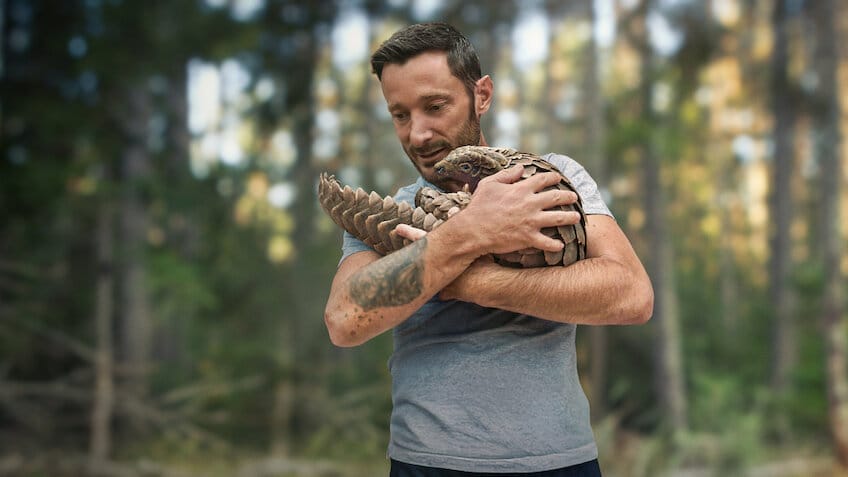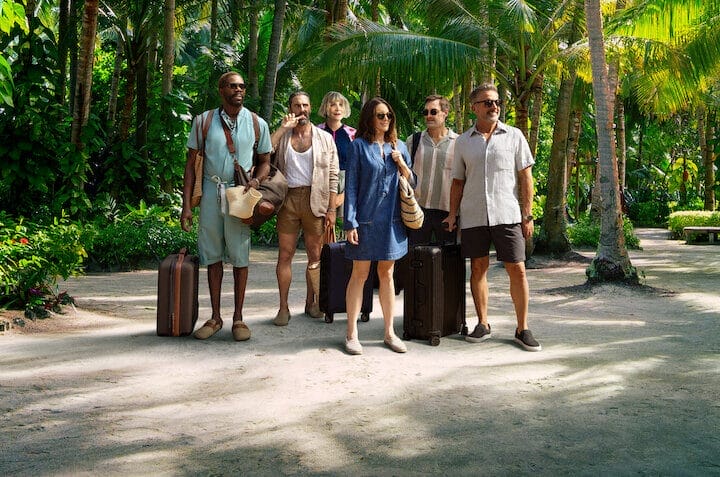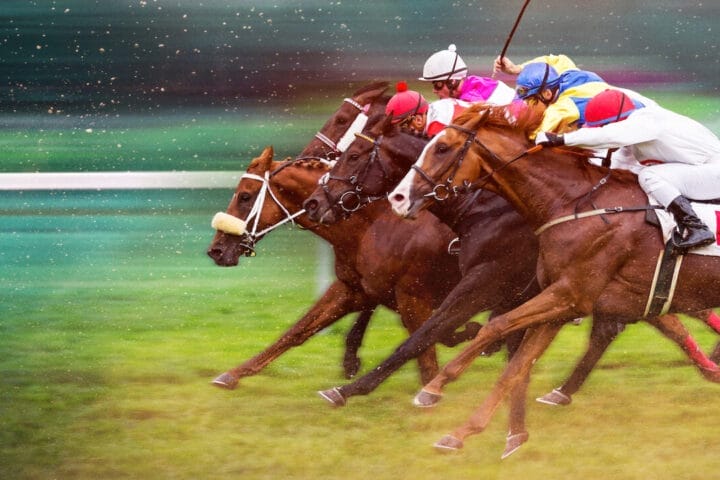Netflix premieres “Pangolin: Kulu’s Journey,” a documentary that follows a small pangolin named Kulu. Ready to meet this unique and fascinating creature, a species that once roamed alongside dinosaurs?
They seem like creatures from another era, small mammals covered head to tail in sharp, overlapping scales made of keratin – the same protein found in human fingernails. Often mistaken for reptiles, pangolins curl into an armored ball when threatened, an effective defense mechanism against natural predators but tragically useless against human poachers. These ancient mammals, who coexisted with dinosaurs, now face a modern crisis. They hold the grim title of the world’s most trafficked mammals, hunted relentlessly for their scales and meat, driving all eight species to the brink of extinction.
Leading the Netflix documentary “Pangolin: Kulu’s Journey” is Pippa Ehrlich, the Oscar-winning co-director of the global phenomenon My Octopus Teacher. Produced by Anonymous Content and Dog Star Films and filmed primarily in South Africa and the UK, the documentary follows Kulu, an endangered baby pangolin rescued from poachers during an undercover operation in South Africa. Kulu embarks on a challenging journey back to the wild with the help of a devoted human guardian, Gareth Thomas. Thomas, seeking a more meaningful existence, finds new purpose in dedicating himself to Kulu’s rehabilitation.
This is the story of an animal that can barely open its mouth to feed, and we follow him from being just a baby on the long road to freedom.
Kulu’s Story: A Journey of Rescue, Rehabilitation, and Reintroduction into the Wild
The film’s narrative opens with the harsh reality of the pangolin trade: a dramatic undercover operation in South Africa intercepts traffickers and saves a traumatized baby pangolin. Among the volunteers involved in the rescue is Gareth Thomas, who names the fragile creature Kulu and takes on the demanding role of his caregiver. He leaves behind urban life, embraces the unusual title of volunteer pangolin caretaker, and dedicates himself entirely to Kulu’s recovery.
The path to rehabilitation is fraught with difficulty. Pangolins rescued from the illegal trade are often deeply traumatized and require intensive, specialized care. They have unique dietary needs, feeding exclusively on specific ants and termites, and cannot simply eat from a bowl but must learn to forage for their food. This necessitates Thomas accompanying Kulu daily, guiding him through the landscape as he learns to find food. This painstaking process unfolds across the vast, protected expanse of the Lapalala Wilderness Reserve in South Africa’s Limpopo province. Kulu’s rehabilitation takes place at a pioneering facility located there: the African Pangolin Working Group (APWG) Pangolarium, the world’s first center built expressly for rehabilitating illegally trafficked pangolins.
Within this sanctuary, a strong bond forms between man and pangolin. Thomas, describing himself as a “helicopter parent,” must navigate the delicate balance of building trust while simultaneously preparing Kulu for a life independent of human contact. The journey is marked by setbacks and moments of peril. Kulu attempts to escape early on, and Thomas recounts a mishap where he lunged between Kulu and an electric fence, inadvertently shocking the pangolin.
The ultimate goal, the culmination of months of tireless effort, is Kulu’s release back into the wild, a return to a life of freedom where he can fulfill his ecological role. Kulu’s individual struggle, meticulously documented, serves as a powerful illustration of the broader conservation narrative. His journey from trafficking victim to wild pangolin encapsulates the immense challenges, resource demands, and deep personal commitment inherent in wildlife rescue and rehabilitation, offering viewers a tangible understanding of what saving a species truly entails.

The Pangolin Paradox: Armored Yet Extremely Vulnerable
Pangolins are biological marvels. They are the only mammals completely covered in scales, granting them a unique evolutionary niche. Eight distinct species roam across Africa and Asia, inhabiting diverse environments from tropical forests to grasslands. They are primarily nocturnal and solitary, navigating their world using a keen sense of smell, which compensates for their poor eyesight. Their diet consists almost exclusively of ants and termites. Lacking teeth, they employ extraordinarily long, sticky tongues, sometimes exceeding their body length, to lap up insects from deep crevices. Their powerful claws enable them to break open termite mounds and ant nests. Beyond their unique biology, pangolins play a vital ecological role, controlling insect populations (a single pangolin is estimated to consume 70 million insects per year) and aerating soil with their burrowing activities. Their reproductive rate is low, typically producing only one offspring per year (though Asian species can have up to three), making their populations slow to recover from threats. Baby pangolins, known as pangopups, typically travel by clinging firmly to the base of their mother’s tail.
Despite their protective armor, pangolins face an existential threat driven primarily by humans. The illegal wildlife trade is decimating their populations globally. Their defensive strategy of rolling into a ball makes them tragically easy for poachers to capture. Demand stems from two main sources: their scales are highly valued in traditional Chinese medicine, used to treat ailments ranging from asthma to arthritis, despite having no scientifically proven medicinal value (they are made of keratin, like human fingernails); and their meat is considered a delicacy and status symbol in countries like China and Vietnam. There is also demand in the Americas, particularly the United States, where their skin is used to make leather goods. Black market prices are astronomical, reaching $300 per kilogram for meat and $3,000 per kilogram for scales.
The scale of this illicit trade is difficult to comprehend. Estimates suggest over a million pangolins were trafficked in the decade leading up to 2020, with around 195,000 trafficked for their scales alone in 2019. Seizures, while sometimes massive (such as the 24 tons of frozen pangolins seized in Vietnam), are believed to represent as little as 10% of the actual trade volume. Analysis reveals a highly sophisticated and adaptable global trafficking network, utilizing at least 159 distinct international trade routes between 2010 and 2015 alone. While poaching and trafficking are the primary threats, pangolins also suffer from habitat loss due to agriculture and development, accidental electrocution from electric fences used in farming, and potential effects of climate change on the insects they feed on.
Reflecting this intense pressure, all eight pangolin species are now listed as threatened with extinction. They are protected under international law through the Convention on International Trade in Endangered Species of Wild Fauna and Flora (CITES), which listed all species on Appendix I in 2016, prohibiting all international commercial trade. National laws also exist in range states. However, the conservation status assessed by the International Union for Conservation of Nature (IUCN) presents a grim picture.
Global Conservation Status of Pangolin Species
The stark contrast between extensive legal protections and catastrophic pangolin population declines highlights a severe disconnect. Despite their CITES Appendix I listing and national legislation, illegal trade thrives, indicating significant enforcement gaps and persistent demand, particularly for traditional medicine uses lacking scientific validation. This situation underscores that legal frameworks alone are insufficient without robust global enforcement, concerted efforts to reduce consumer demand, and addressing the misinformation driving the trade.
Behind the Lens: The Making of Kulu’s Journey
Pippa Ehrlich brings her acclaimed sensibility for capturing human-animal connections to “Pangolin: Kulu’s Journey.” Her stated aim is to foster empathy and understanding, hoping that Kulu and Gareth’s story of “love, trust, and understanding” will resonate deeply and inspire viewers to recognize the beauty and importance of these “extraordinary, gentle, and shy creatures.” The documentary deliberately avoids a detached, purely zoological approach, opting instead for a personal and engaging narrative that blends intimate storytelling with a clear conservation message.
The film immerses viewers in the breathtaking landscapes of South Africa’s Lapalala Wilderness Reserve. Cinematography by Warren Smart, Steven Doer, and even Gareth Thomas himself captures the reserve’s mountains, wetlands, and savanna, along with its diverse wildlife and intricate insect life, creating a remarkable visual experience. The Pangolarium, Kulu’s temporary home, is also featured.
Undoubtedly, filming pangolins presented a significant challenge. These animals are inherently elusive, primarily active at night, solitary, and generally avoid interaction.
The film’s emotional landscape is enhanced by the score, composed by Anne Nikitim, and possibly amplified by the “moving instrumentation and African vocals” mentioned in early reviews.
The film’s intimate focus on the relationship between Gareth and Kulu follows a common thread in contemporary wildlife filmmaking. While highly effective at creating emotional engagement, this personalization of an animal protagonist carries the inherent risk of anthropomorphism. However, this approach appears to be a strategic choice. By making the abstract threat of global wildlife trafficking deeply personal and tangible through Kulu’s vulnerability and Gareth’s dedication, the film aims to forge an emotional connection strong enough to overcome viewer apathy and convert passive viewing into active concern for the species’ fate.
Beyond the Screen: Connecting Kulu to Global Conservation
“Pangolin: Kulu’s Journey” shines a spotlight not only on Kulu but also on the individuals and organizations working on the front lines of pangolin conservation. Gareth Thomas is featured not just as a caregiver but also as an ambassador for the African Pangolin Working Group (APWG), the organization that played a pivotal role in Kulu’s rehabilitation and collaborated on the film’s production. Alexis Kriel, co-chair of the APWG, expressed hope that the documentary would generate crucial public awareness, driving the discussion and political will needed to change the species’ fate. The film also showcases the Lapalala Wilderness Reserve and its unique Pangolarium as vital conservation infrastructure. Notably, the Pangolarium receives funding from Lepogo Lodges, illustrating the potential link between sustainable tourism and direct conservation funding.
Kulu’s story unfolds within the context of extensive global conservation efforts. International bodies like the IUCN, through its Red List assessments, and specialist groups like the Pangolin Specialist Group, provide crucial scientific guidance and status updates. CITES provides the international legal framework attempting to curb this devastating trade. Numerous non-governmental organizations (NGOs) are actively involved: WWF works on multiple fronts, including reducing consumer demand in Asia, supporting anti-poaching efforts, advocating for stronger laws, and co-convening the Coalition to End Wildlife Trafficking Online; TRAFFIC focuses on monitoring trade routes, conducting research, and running awareness campaigns; and IFAW works across the entire illegal trade chain, from training rangers to reducing demand. These international efforts are complemented by national strategies, such as Kenya’s National Recovery and Action Plan, and regional plans, like the Sunda Pangolin Conservation Strategy.
The documentary itself serves as a powerful component of these broader efforts, with the explicit goal of being more than just passive entertainment. By intimately portraying Kulu’s vulnerability and the dedication required for his survival, the film seeks to bridge the emotional distance that often characterizes large-scale conservation crises. It makes the impactful statistics of the pangolin trade personal and relatable, connecting one animal’s fight for life to the global struggle against wildlife trafficking. The hope is that this emotional connection will translate into tangible action, whether through raising awareness, supporting conservation organizations like APWG or WWF (which offers symbolic pangolin adoptions), reporting suspicious online wildlife product advertisements, or advocating for stricter enforcement of existing laws. Pippa Ehrlich’s own organization, Sea Change Project, while focused on marine conservation, exemplifies this model of using impactful storytelling to advocate for nature protection.
Our Take
“Pangolin: Kulu’s Journey” serves as an amplifier for a desperate plea. It stands as a powerful reminder that the pangolin’s fate hinges significantly on continued human action: strengthening law enforcement, dismantling trafficking networks, reducing demand for illegal products, protecting habitats, and supporting the conservationists working tirelessly on the ground.
Does it go straight for the heartstrings? Absolutely, yes.
We love animals, nature, and this adorable, utterly defenseless little creature is bound to steal your heart.
But make no mistake, this isn’t a sad story; it’s a wonderfully hopeful tale of a little animal who will ultimately achieve freedom.
Enjoy watching.
Where to Watch “Pangolin: Kulu’s Journey”












